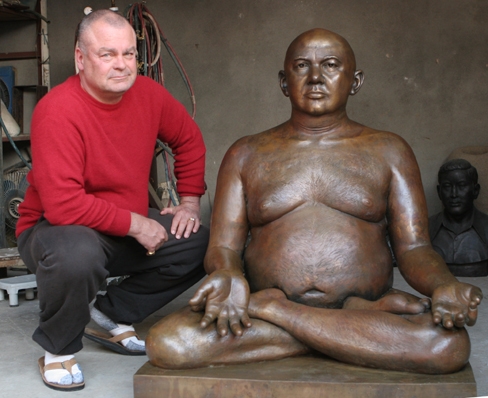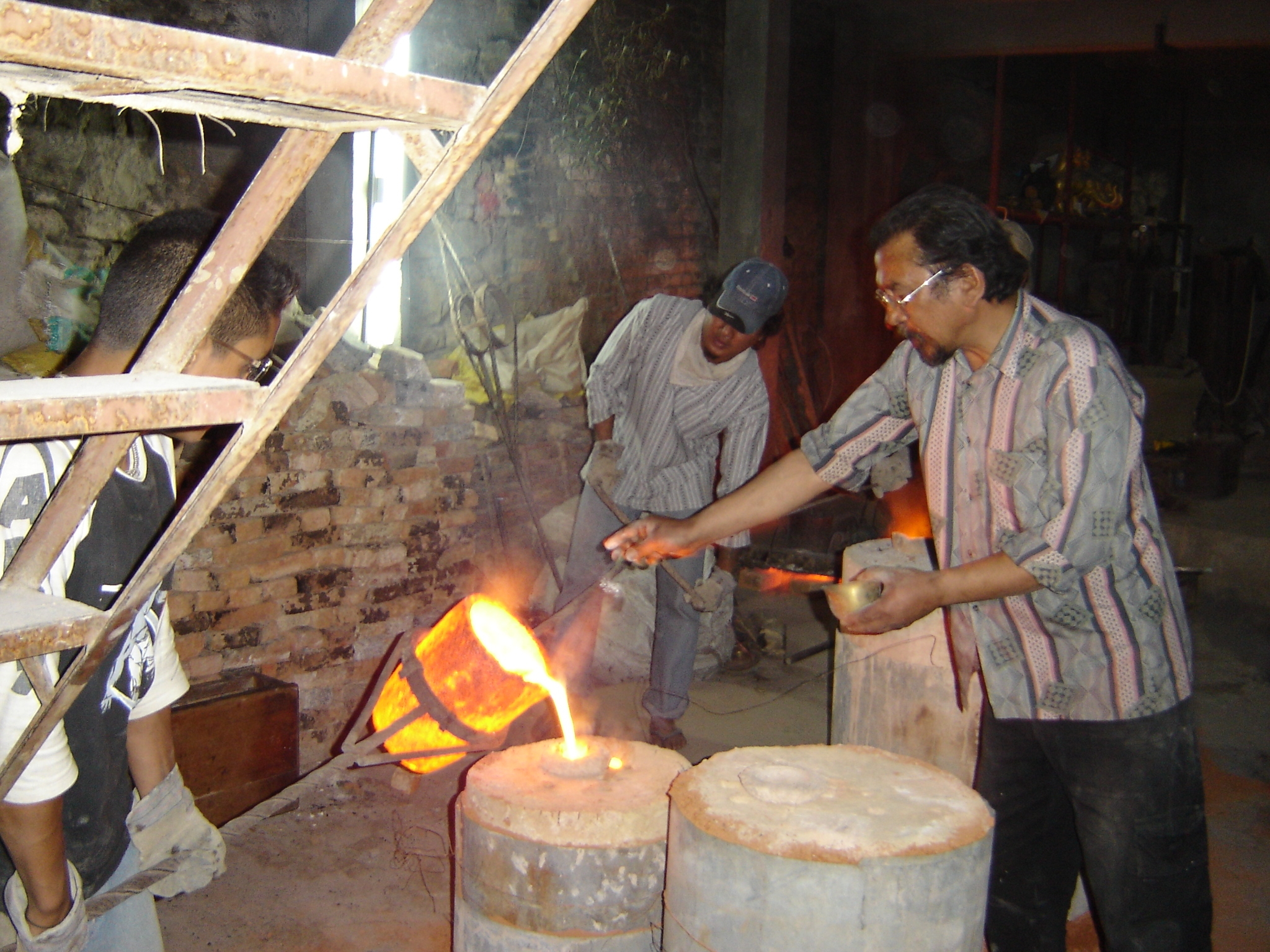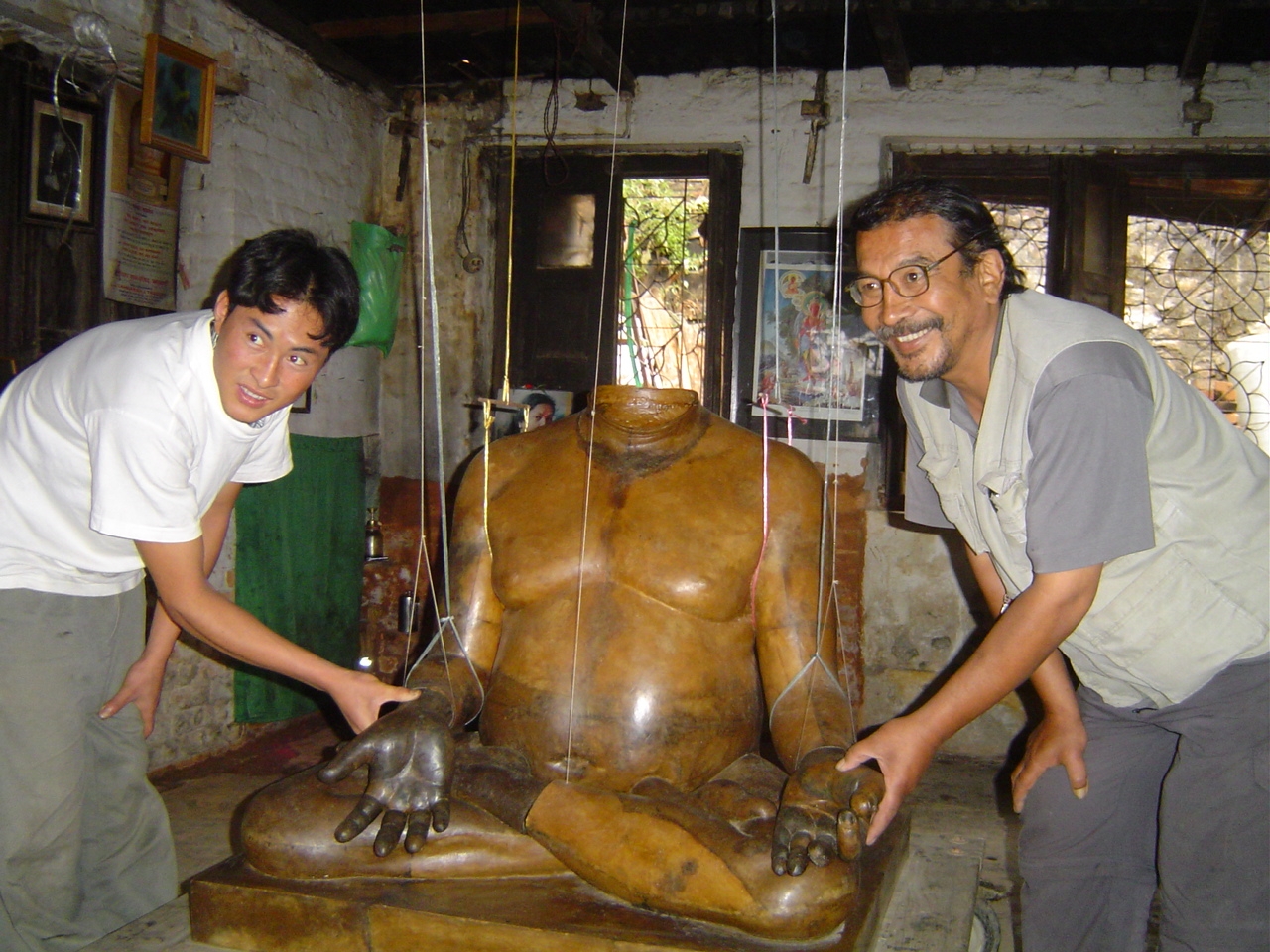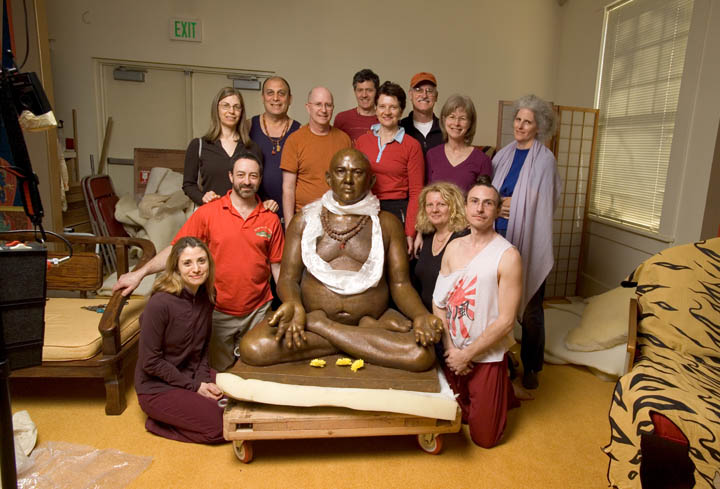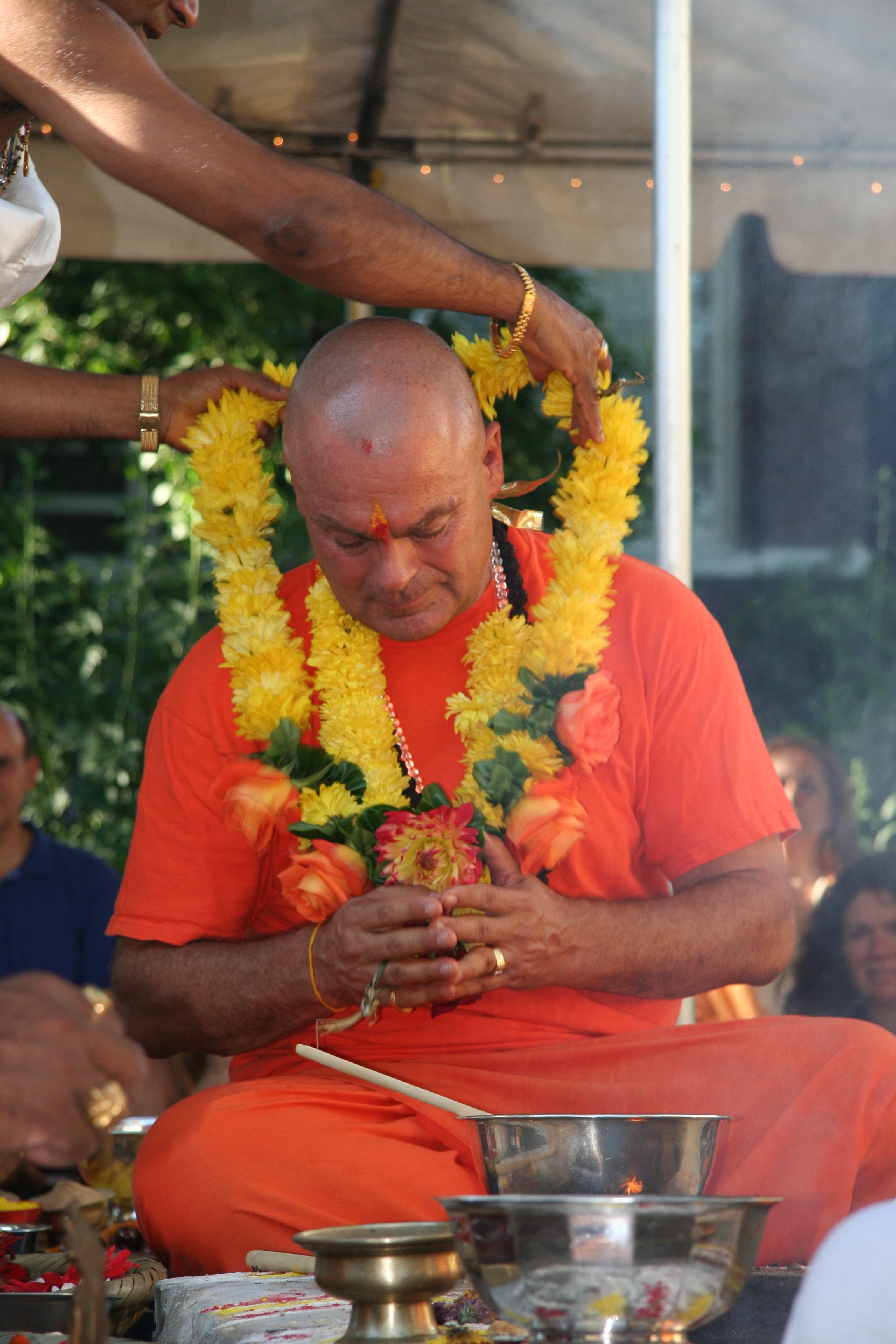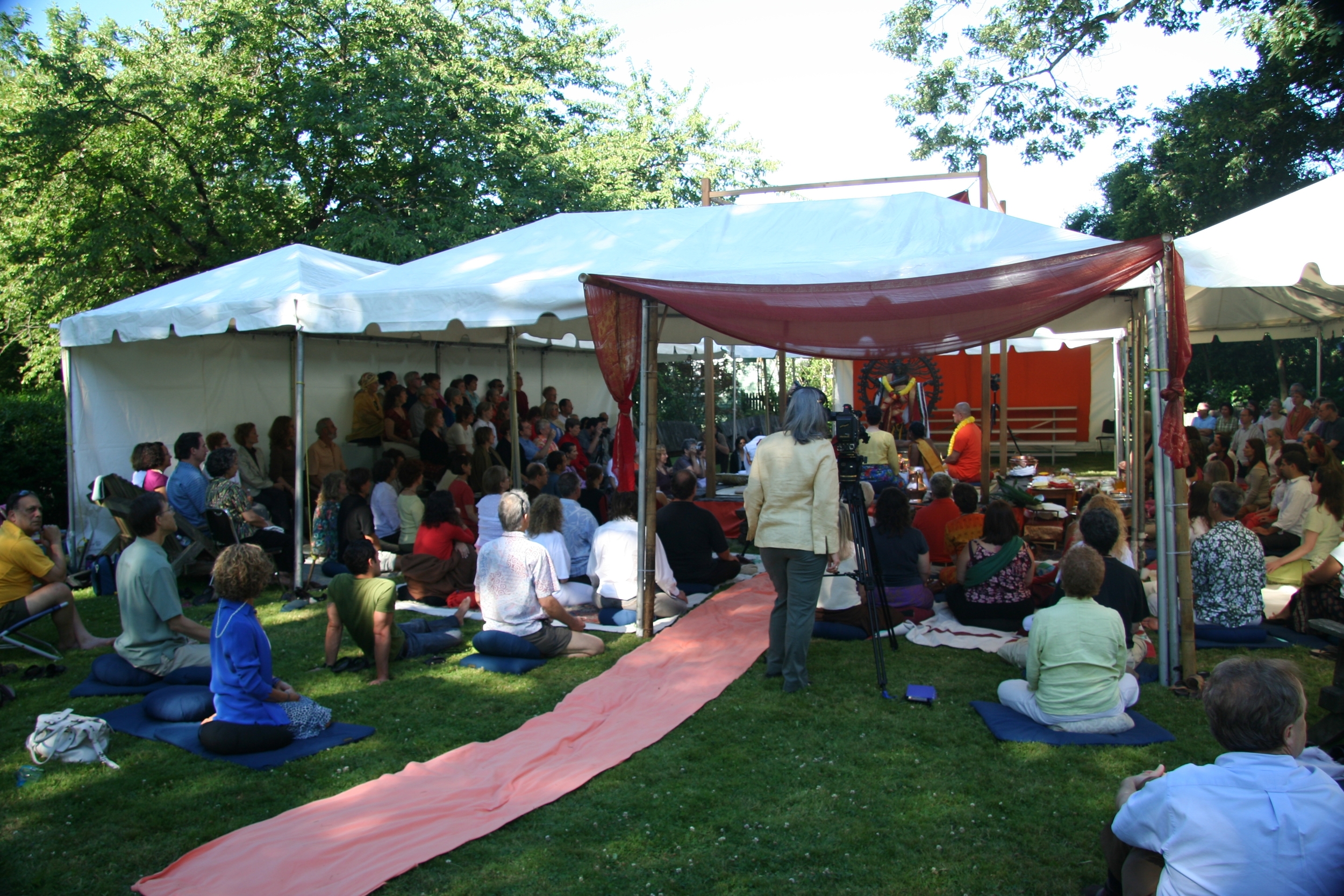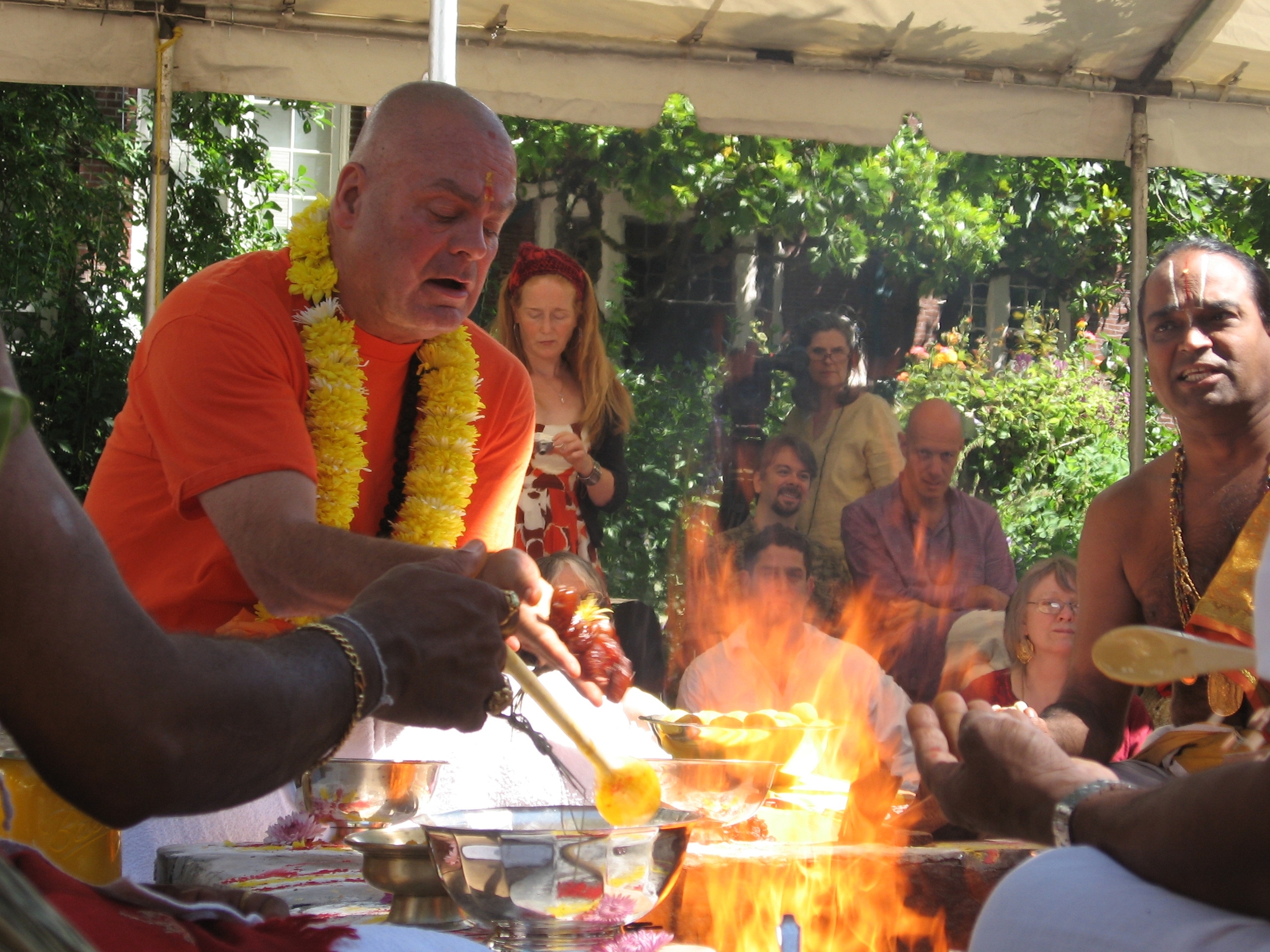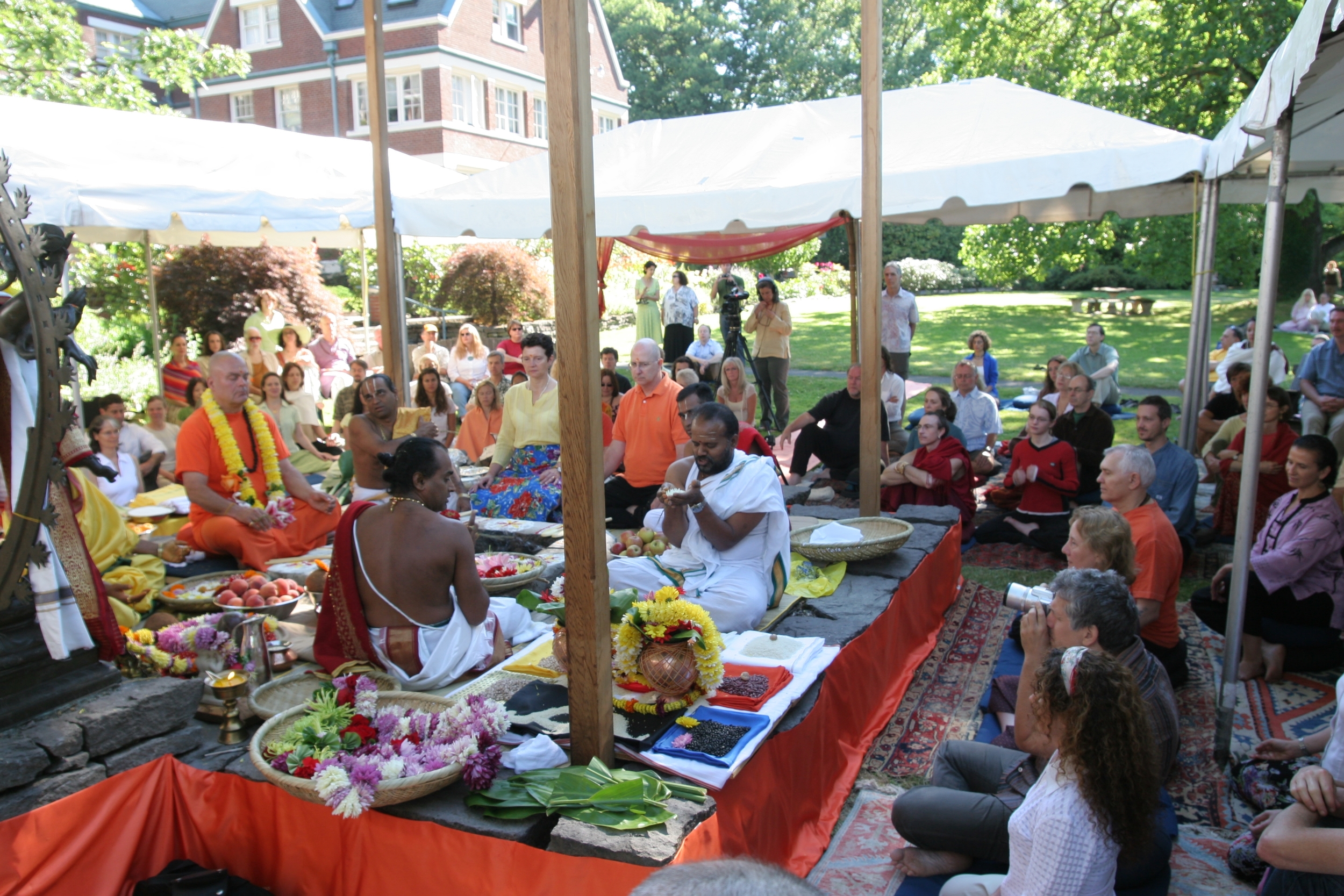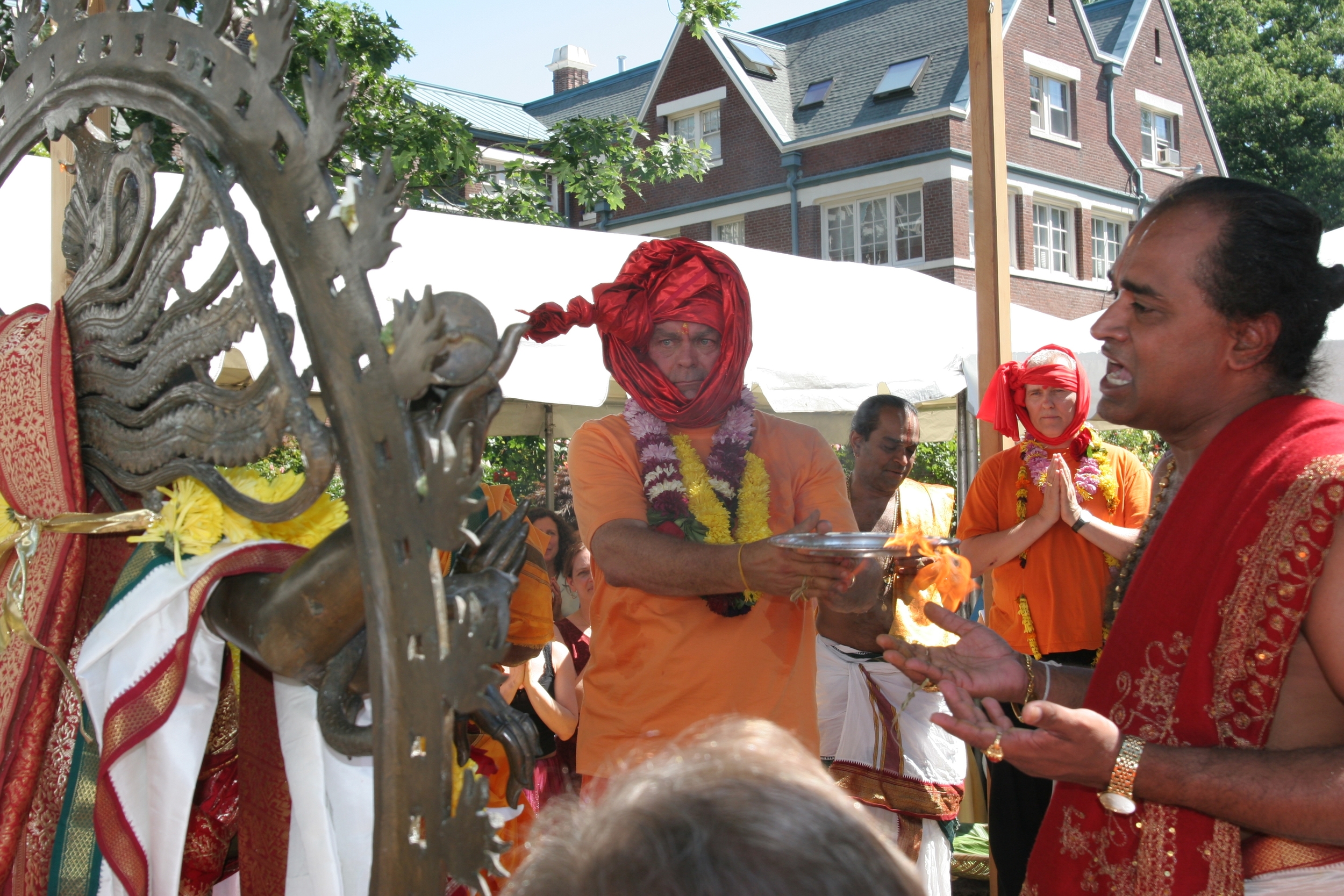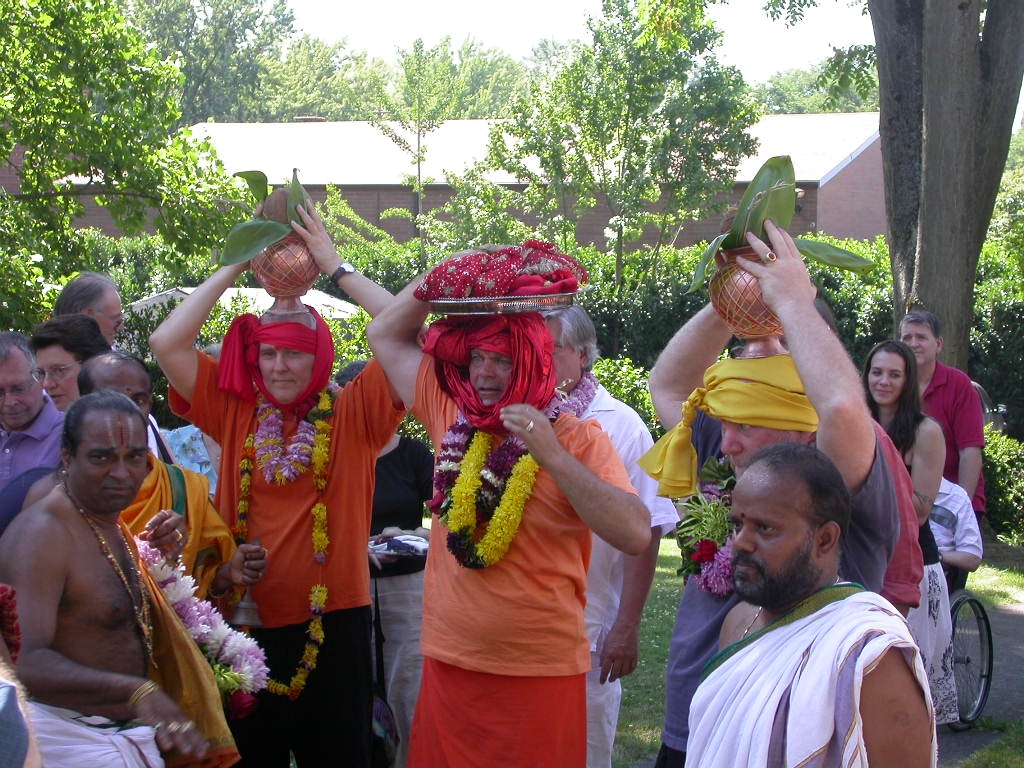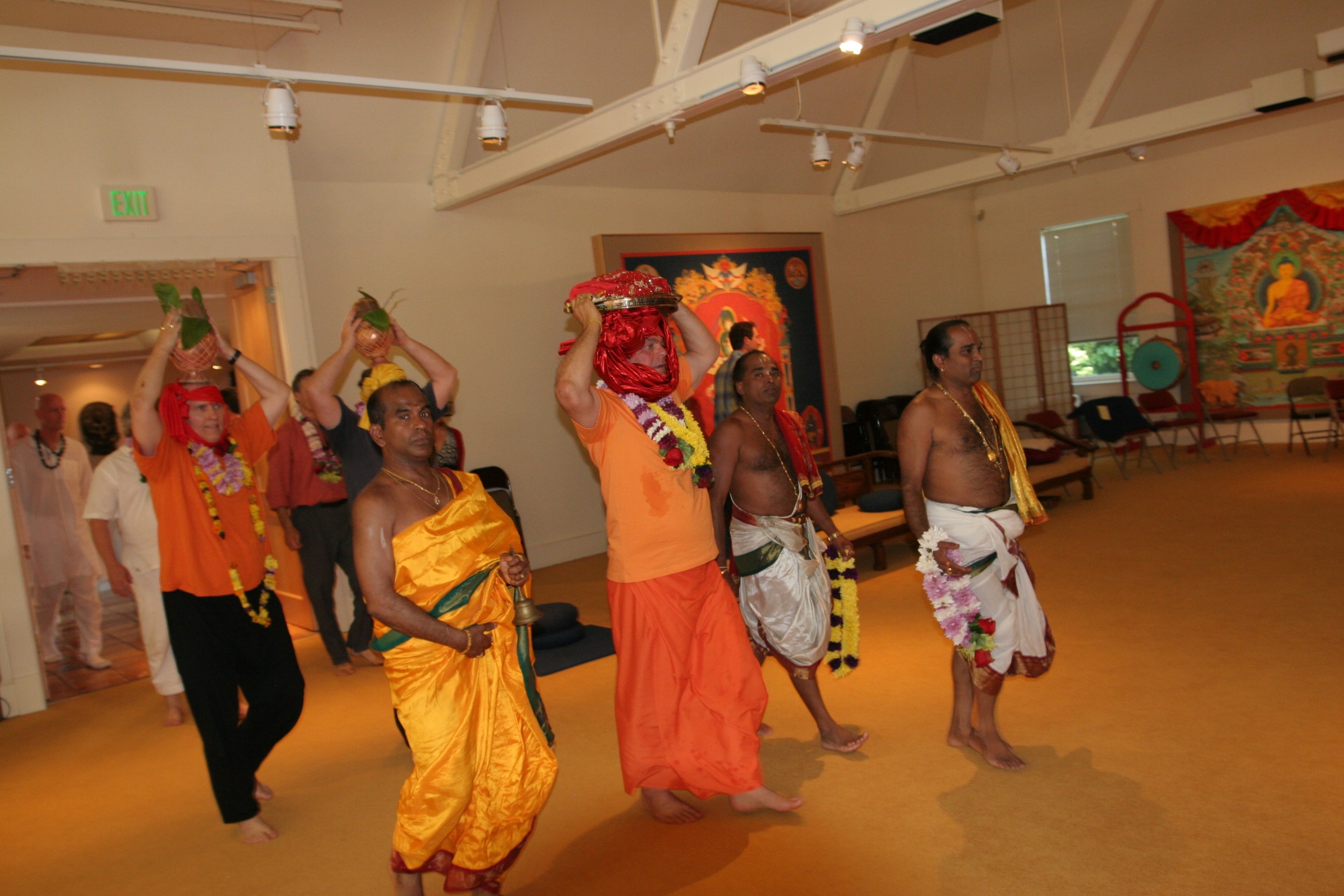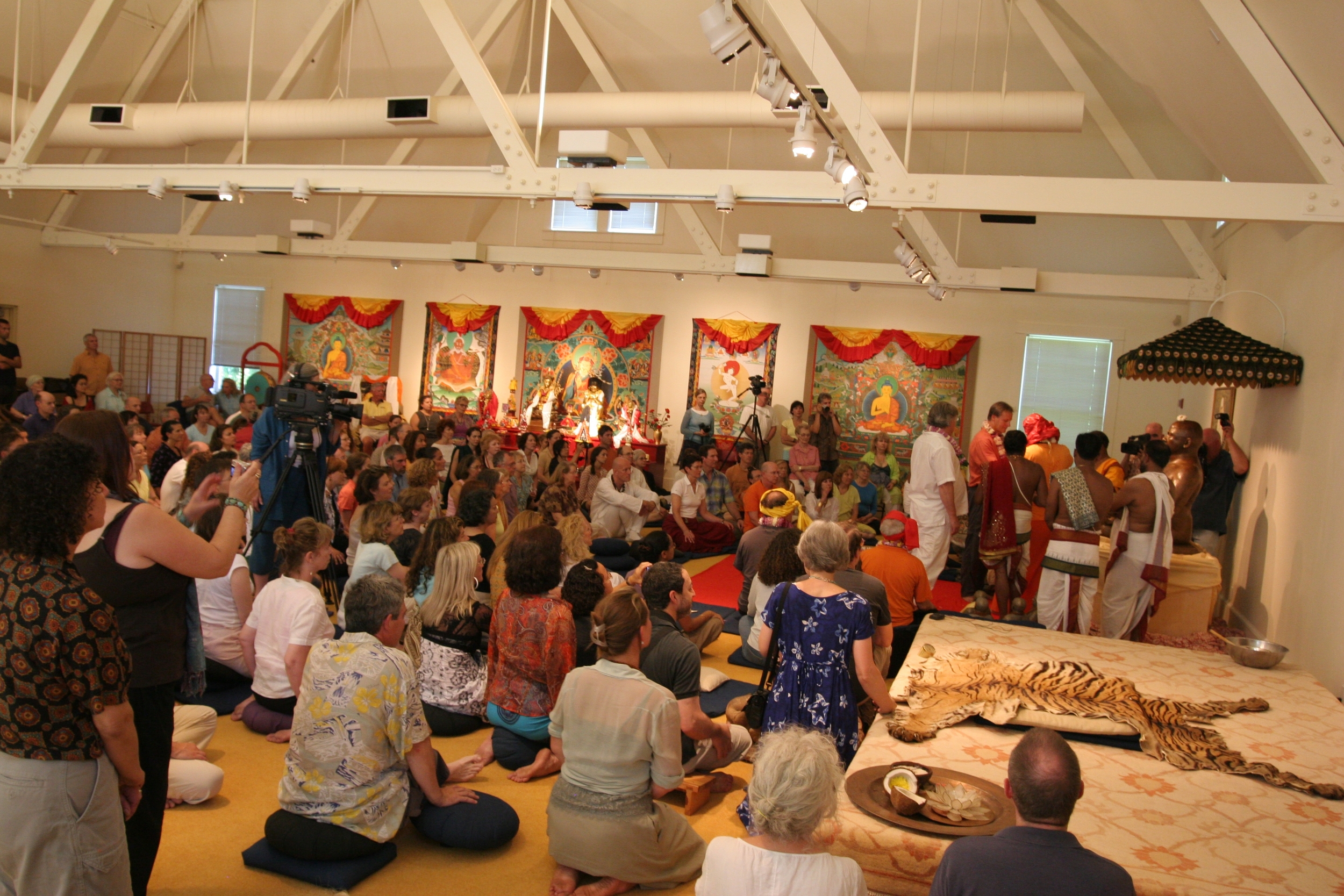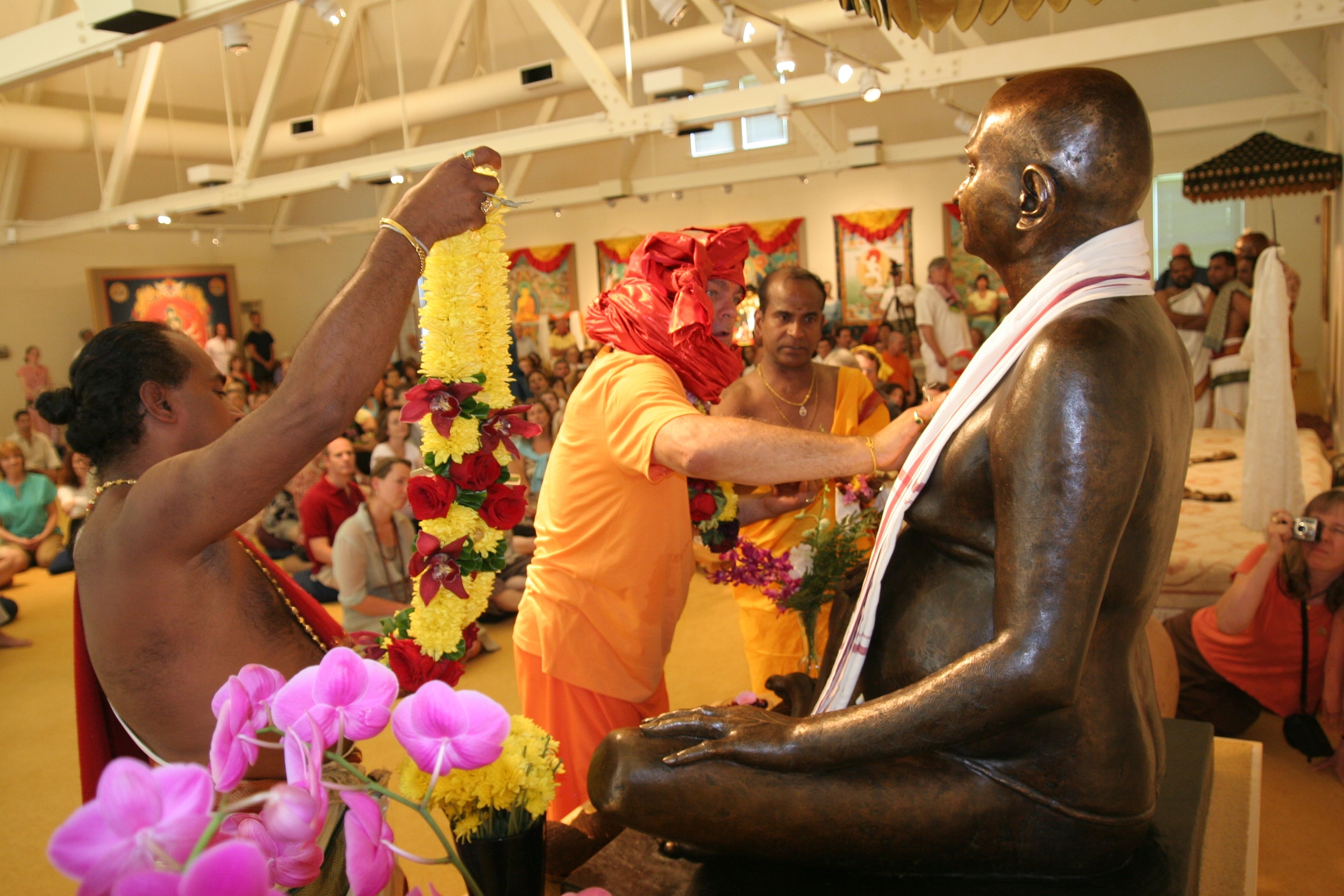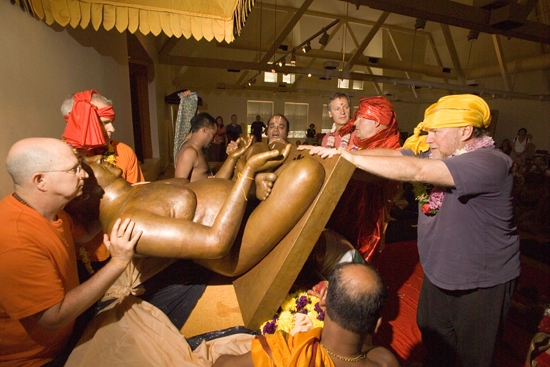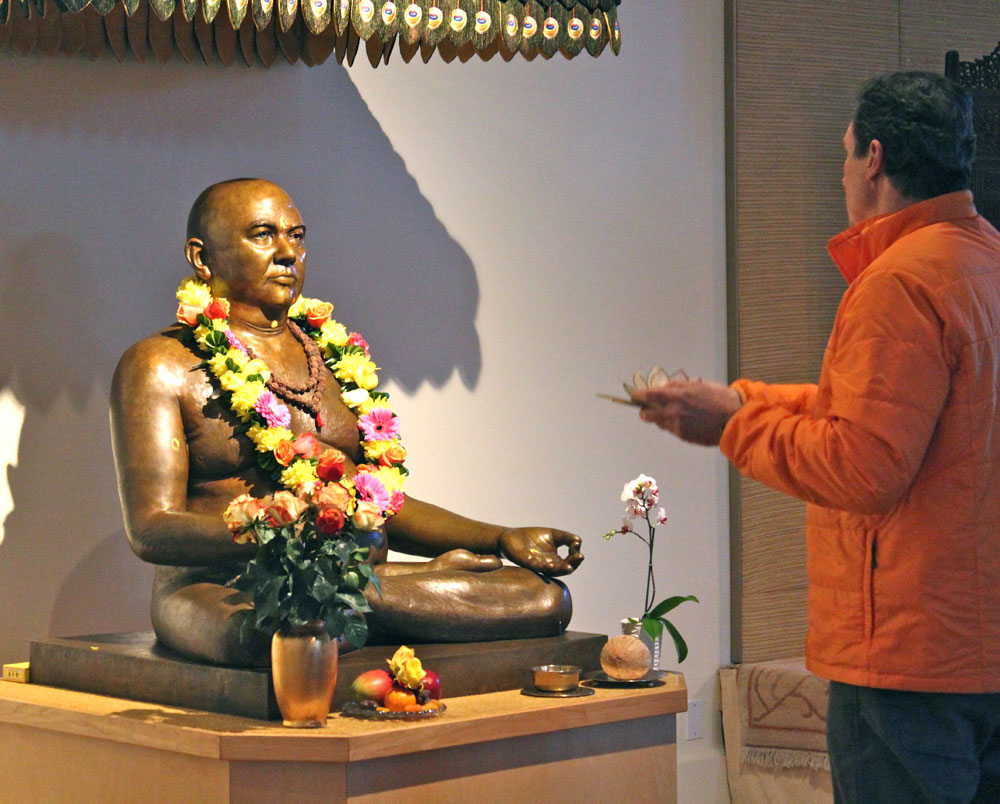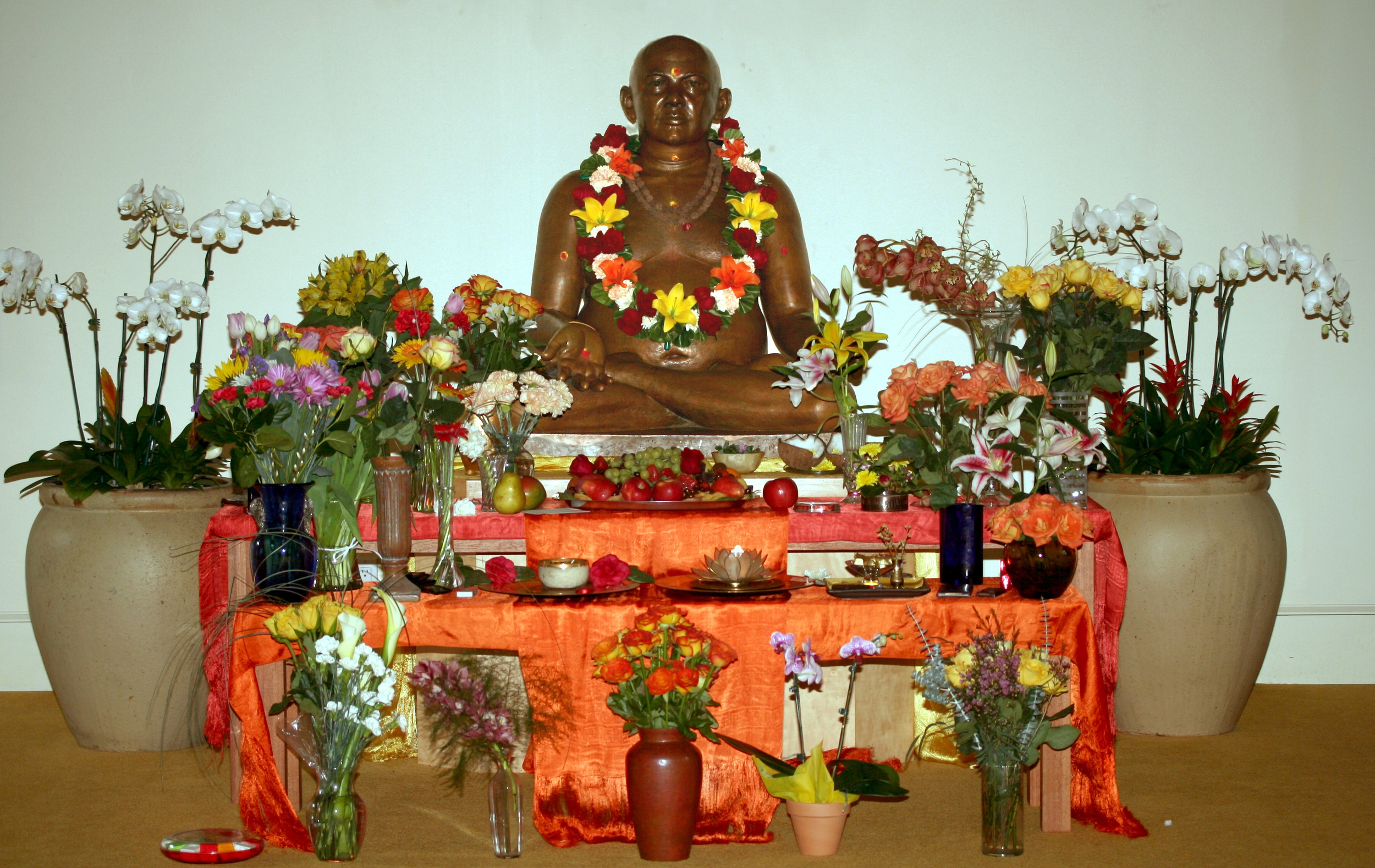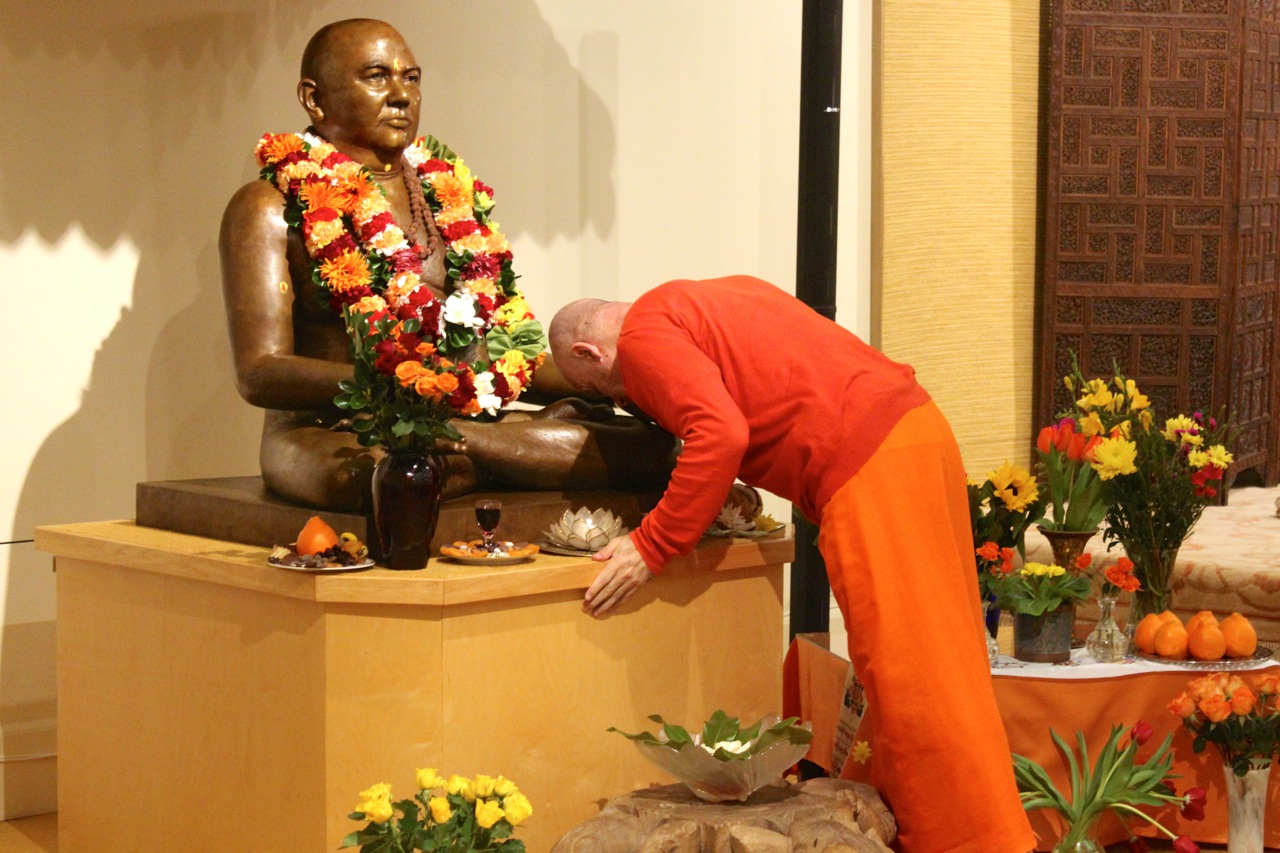The Rudi Statue
The Movement Center's meditation hall features a life-sized statue of Rudi created in Nepal by Karla Refojo, a student of Swami Chetanananda, and Ravindra Jyapoo, a well-known Newari sculptor/bronze caster in Kathmandu. The statue was cast using the traditional "lost wax" or cire perdu method used in Nepal for centuries. The traditional process is complicated and time-consuming, but allows the artisan to achieve very fine detail.
The Newar artisans of Kathmandu are among the best in the world, most notably for their expertise in the lost wax process. The tradition of metal casting in Nepal dates back from the Licchavi period (300-800 C.E.) The conditions in which Newars work today and their techniques have remained largely unchanged since ancient times. They work in poorly lit, small spaces with inadequate ventilation, yet they create unparalleled masterpieces of workmanship and beauty.
Work on the Rudi statue began in Ravindra Jyapoo’s small house at the base of Swayambunath stupa in 2001 and was completed in early 2006. The challenges faced by the sculptors were numerous and are explained in Karla Refojo's article at asianart.com. When the day came for Rudi to leave Kathmandu, an entire wall of Ravindra’s studio had to be taken down so that the statue could be removed. Rudi arrived in Portland on April 12, 2006, and was placed in the meditation hall until the official consecration ceremonies.
In the summer of 2006, the statue was consecrated with a series of havans conducted by Swamiji with several Brahmin priests over a period of two days. The events culminated in a pranapatistha ceremony to install the life force in the statue at a precise auspicious moment determined by astrologer Chakrapani Ullal, a devotee of Nityananda and a friend of Rudi.
Here's an article from the Friends of the Nityananda Institute Newsletter describing the pranapatishta ceremonies.
Aarti to the murti is performed daily before morning and evening meditation.

